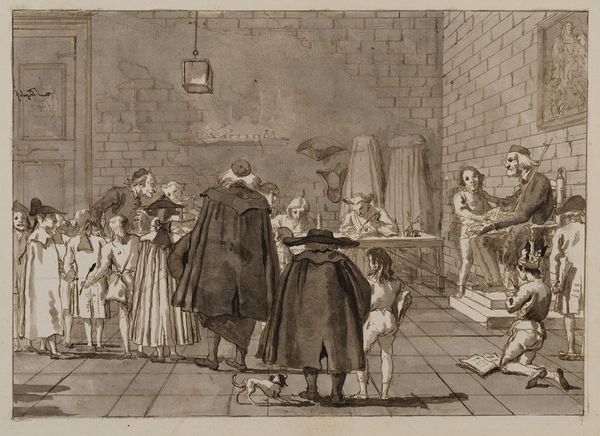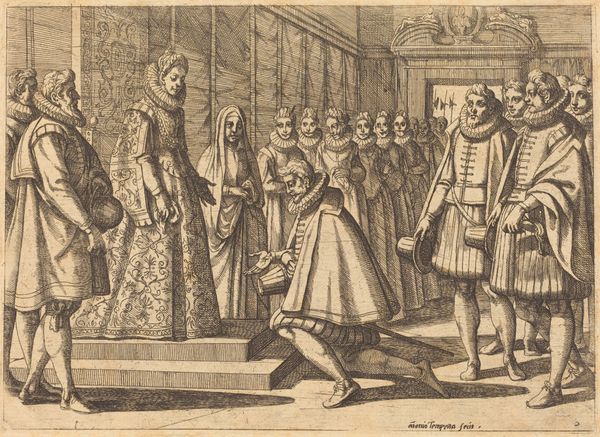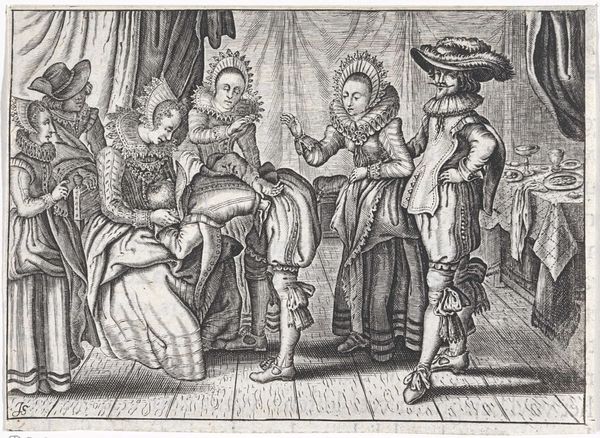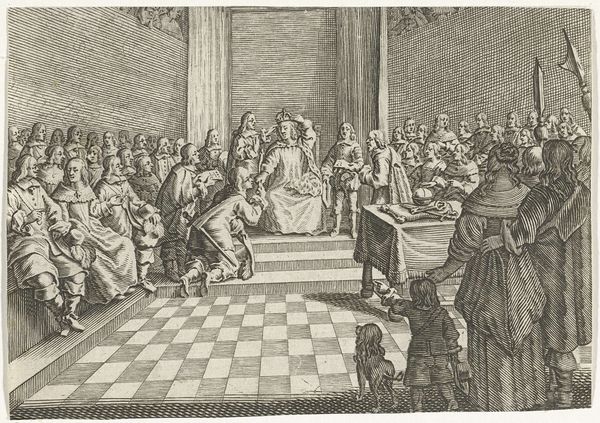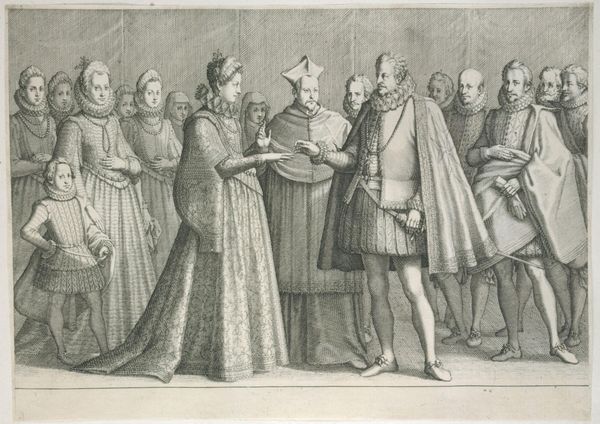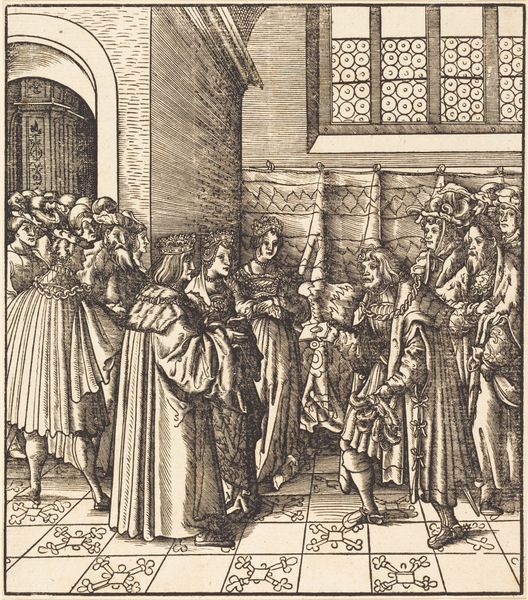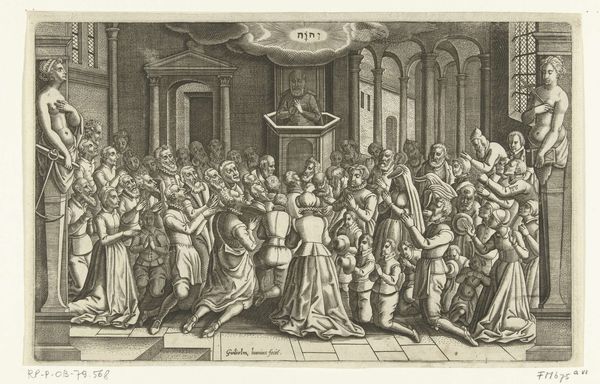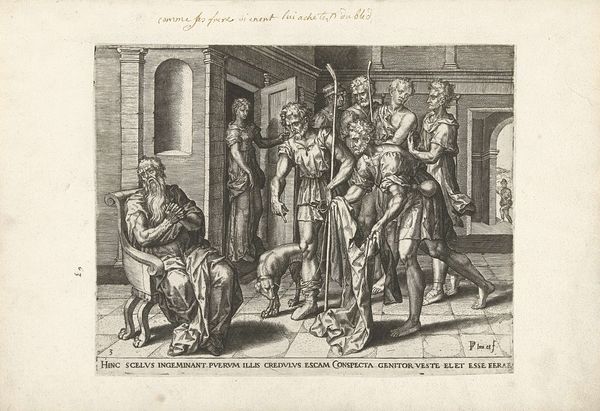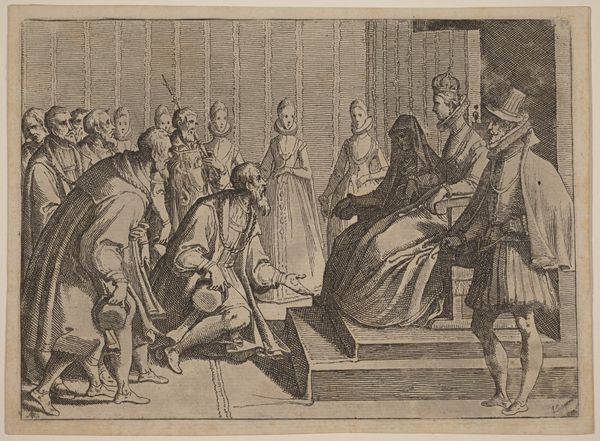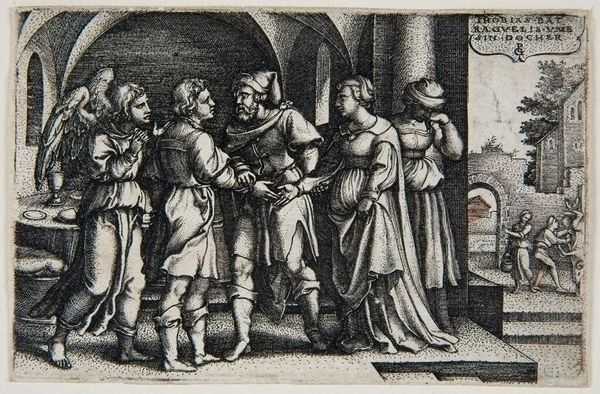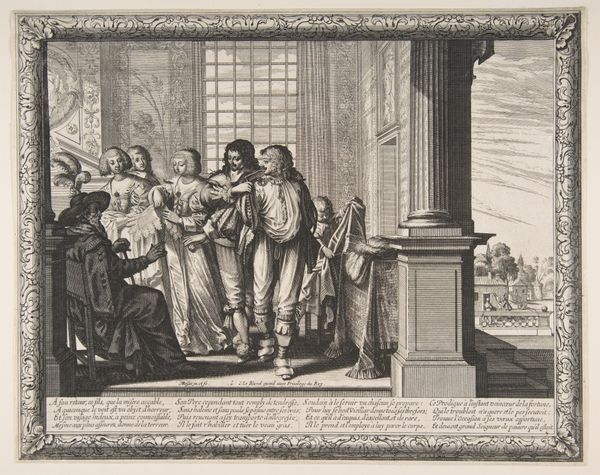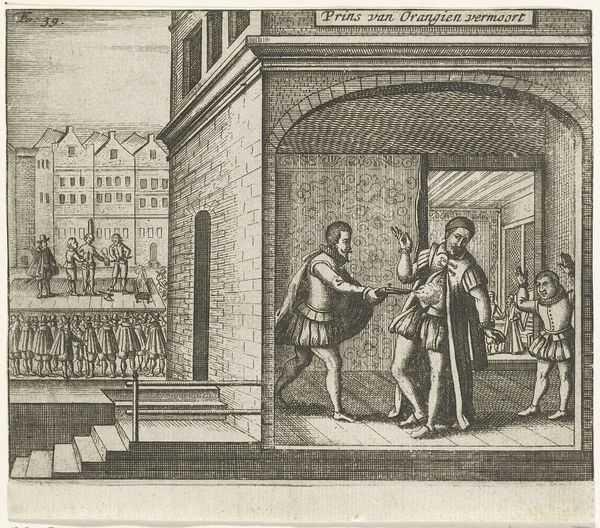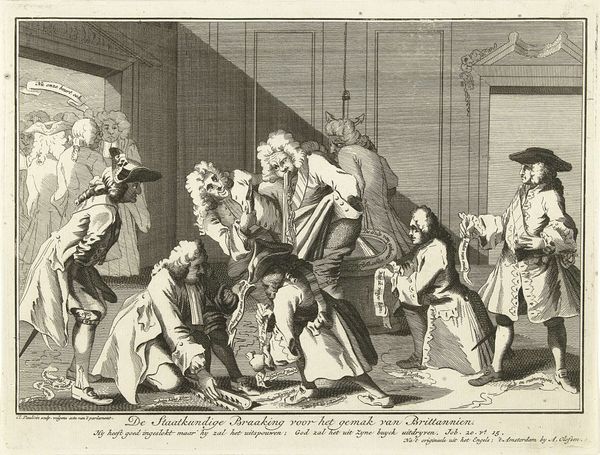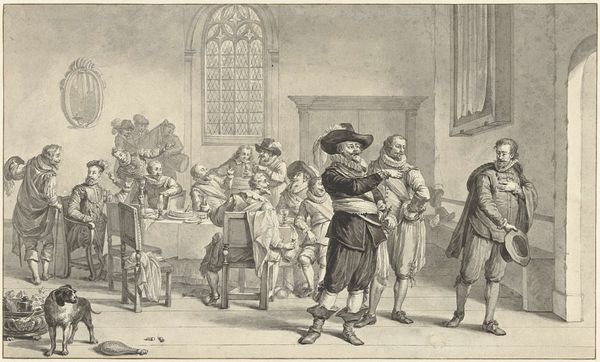
painting, oil-paint
#
portrait
#
baroque
#
painting
#
oil-paint
#
painted
#
group-portraits
#
genre-painting
#
mixed media
Dimensions: 75.5 x 106.5 cm
Copyright: Public domain
Curator: Ah, yes, "The Wedding Party" by Willem Cornelisz Duyster. He created this bustling scene with oil paints back in 1625. It now resides here at the Rijksmuseum in Amsterdam. Editor: You know, my first thought seeing this is how… staged it feels. Everyone’s arranged, not quite connecting. Like a perfectly crafted performance where the energy's a bit off. Curator: Exactly. Duyster’s paintings often explore social dynamics and decorum. This genre scene isn’t just about celebrating a marriage; it’s meticulously showcasing status and conveying social roles. The dark clothing contrasts so vividly with the bright, elaborate ruffs of lace. These function as more than mere fashion; they denote affluence and societal position. Editor: That checkered floor pulls my eye—a deliberate move, don’t you think? It throws everything else off-kilter and almost carnival-esque, undercutting any highbrow stuffiness the clothing suggests. It injects this playful unease to an otherwise quite serious affair. Curator: The checkerboard floor is a deliberate choice indeed. Think of vanitas symbolism, where contrasting dark and light suggests moral ambiguities, hinting at the impermanence of material joys and moral complexities present in a formal gathering. It is subtle, and would have communicated far more intensely to an contemporary observer than it does to us now. Editor: Okay, okay, I see the somber moral lesson poking through the fancy clothes. But look how separate everyone is—little clusters not quite interacting. That loneliness amidst all the splendor feels very modern, don't you think? Almost ahead of its time. Curator: Loneliness amidst splendor. That’s an astute observation. Although group portraits of the era frequently presented subjects somewhat formally, conveying more than individual emotion and rather social interconnectedness or class position within the societal fabric. It echoes concepts that would permeate painting throughout history—the complex relationships and hierarchies in human society. Editor: I like it. It's a bit sad, and that’s what makes it sing. A hidden whisper amid all of that apparent celebration. Curator: Duyster really invites us to peer closely, to find meaning interwoven through gesture, attire, and placement. Thank you for sharing your keen eye. Editor: Thanks for giving me the symbolic back-story. This piece went from staged and stilted to a surprisingly emotional tableau.
Comments
No comments
Be the first to comment and join the conversation on the ultimate creative platform.
